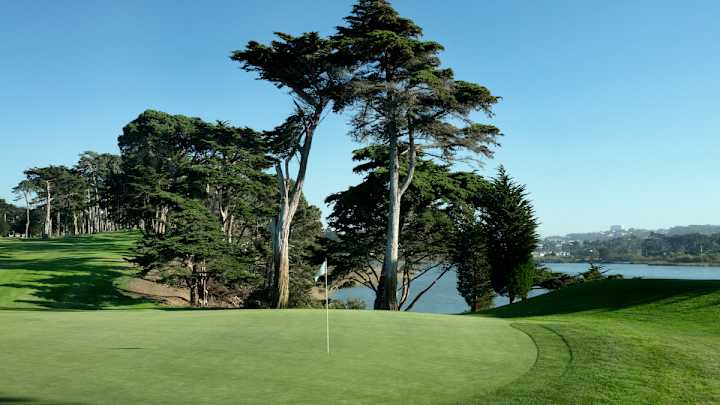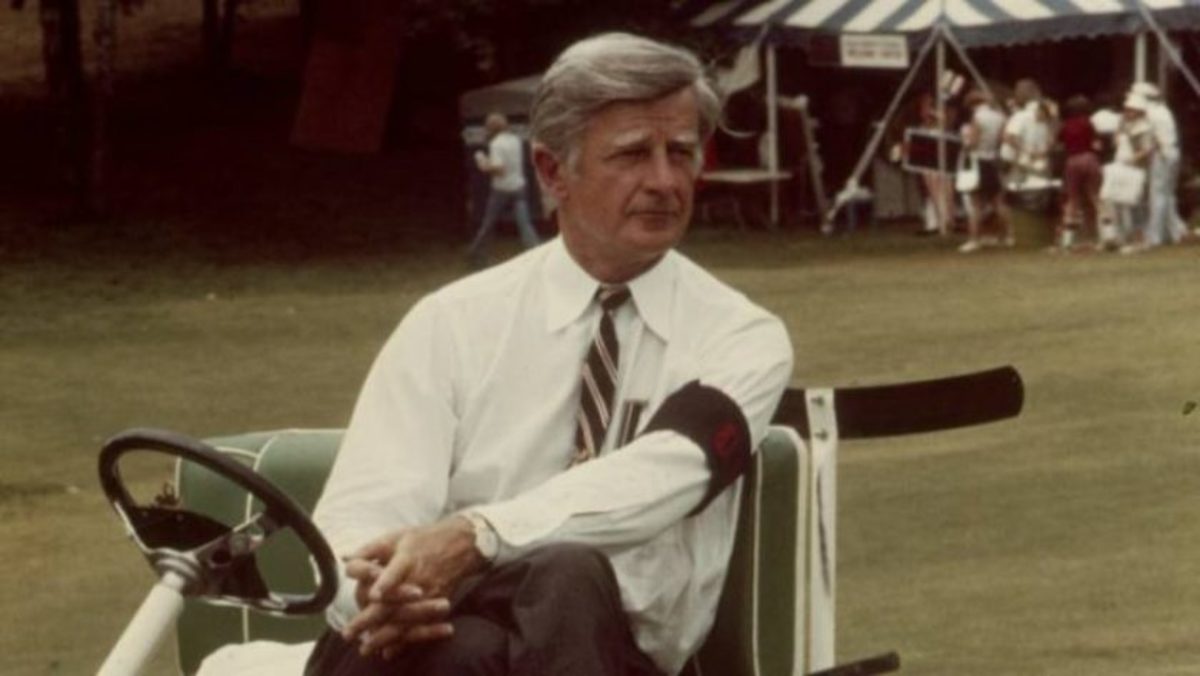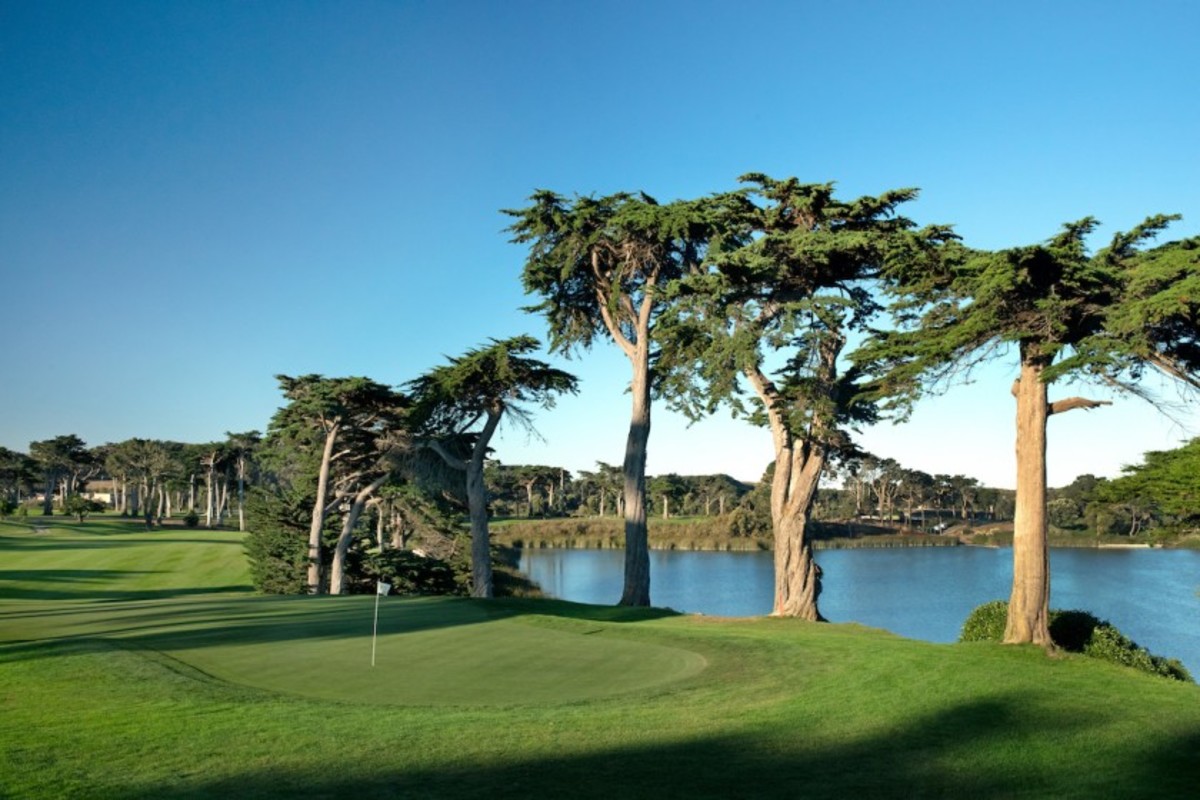TPC Harding Park relishes glorious revival

The story of the rise, fall and rise of TPC Harding Park is oft-told, but bears repeating, if for a very specific reason. All it takes is one person who cares. One person with passion and drive can topple the first domino.
For Harding Park that person was Sandy Tatum Jr. Without Tatum, there would be no PGA Championship at Harding Park in 2020. Without Tatum, they might not even have been playing golf at all at Harding Park in 2020. Without Tatum, golf might not even still exist at the noted San Francisco venue.
Harding Park Golf Club has enjoyed a 95-year history as one of America’s greatest municipal golf courses. Owned by the city and county of San Francisco, it was rebranded as a TPC facility in 2010. From the start, it was a heralded layout and also one tinged with political intrigue.
Designed in 1925 for the princely sum of $300 by William Watson and Sam Whiting, the same duo that had crafted the courses for its next-door neighbor, the Olympic Club, Harding Park was originally set to be named Lake Merced Municipal Links, for the large lake that abuts the course’s western boundary. However, civic leaders chose instead to honor the late President Warren G. Harding, an avid golfer who died while visiting San Francisco in 1923.
In short order, Harding Park took its place among the most scenic championship tests in America. It played host to the USGA’s Amateur Public Links Championship in 1937, and again in 1956. The PGA Tour visited twice in 1944, when Byron Nelson won the Victory Open in January and triumphed again in December’s San Francisco Open.
During the 1960s, Lucky Stores, a local grocery supermarket chain, sponsored a PGA Tour event at Harding Park from 1961 through 1966, and again in 1968. Winners included Gary Player, Gene Littler, Billy Casper and Bay area legend Ken Venturi.
Venturi figured in the most illustrious Harding Park tournament of the 20th century, and it had nothing to do with professional golf. Since 1925, Harding Park has played host to the San Francisco City Amateur Championship. Interest in “The City,” as it’s known, reached an apex in 1956, when two-time champ Venturi captured his third, downing Harvie Ward, the reigning U.S. Amateur and British Amateur champion in front of more than 10,000 fans.

In 2005, Venturi told the San Francisco Chronicle’s Ron Kroichick, “In those days, it was as good as any country club around. The golf course was immaculate. Everyone took really good care of it. They fixed their ball marks and divots. And if someone didn’t fix them, they were told about it and they did not make the mistake again.”
From the 1970s through the 1990s, however, no one was fixing anything.
“City budgets did not allow for proper upkeep and maintenance workers at the course were not always vigilant,” wrote Kroichick. “Golfers became resigned to Harding’s sad, steady decline.
“PGA Tour veteran Scott McCarron, who grew up in Sacramento and played in the City Championship many times, recalled one tournament in which 17 temporary greens were used because the regular greens were in such terrible shape. The temporary greens were simply circles of white paint in the fairway, with a pin plopped in the middle.
“Another longtime pro, San Mateo-raised Michael Allen, described the signature Harding scene as a player hitting his drive right down the middle of the fairway — never to see the ball again, lost amid all the daisies.”
Rock bottom for Harding Park occurred in 1998, when its fairways were used as a parking lot for the U.S. Open at nearby Olympic Club.
Enter a guardian angel in the form of Frank D. “Sandy” Tatum Jr., who was a remarkable figure in golf. A longtime attorney in the Bay Area, he served on more than a dozen boards and committees for nonprofit entities intended to benefit the community. He also served as president of the United States Golf Association from 1978 to 1980. While attending Stanford University, he helped the Cardinal to successive NCAA men’s golf titles in 1941 and ’42, winning individual honors in 1942. Although he was a member at two of the most exclusive golf enclaves — San Francisco Golf Club and Cypress Point Club — his heart somehow was captivated by the municipal Harding Park.
Tatum died in 2017, at age 96. What he accomplished on behalf of public golfers and Harding Park will never be forgotten. In 2009, he shared with Chris Santella, author of Fifty More Places to Play Golf Before You Die, how and why he came to rescue this magnificent muni.
“I played in the San Francisco City Championship for thirty years, beginning in the late thirties,” Tatum said. “I played Harding enough to get a sense of its quality and attractiveness. I don’t recall exactly what brought me here in the late nineties, but I do remember that looking at the place, I was horrified. The course was turning into a weed patch; beyond the grand cypress trees and the lake, it had lost everything. I thought it was at risk of deteriorating beyond the point of people being able to play on it, and I wanted to make sure that such a disaster was avoided.”

For Tatum, the fix had to entail a collaborative effort and outside help.
“In my mind, there was no question that the course could be effectively renovated,” he said, “but I knew that it would cost a great deal of money. I knew the city of San Francisco didn’t have that kind of money. My hope was that we could lure a Tour event to Harding, which would give the course an identity that could sustain a green fee structure that’s affordable for San Francisco residents and priced for non-residents to be able to finance the whole project.”
Tatum convinced then PGA Tour commissioner Tim Finchem to take a meeting on the topic. Sufficiently intrigued after their get-together, Finchem sent the Tour’s head of design and construction, Chris Gray, to take a look. On a misty, foggy day in the winter of 1998, Tatum and Gray toured the dilapidated layout. Gray’s initial impressions were negative — “it was barely a golf course,” he said. The more he saw, however, the more he liked. Gray knew he had a tough task ahead.
“You could just see Harding was a good piece of ground, and with all the framing of the trees you could generate a classic course,” Gray told Kroichick. “And the fact you could rehabilitate such a tragedy was appealing.”
From there, it took three years of complicated, at times contentious legal, political and financial maneuvering to bring Harding’s bright future into focus. Mayor Willie Brown and a cast of many others fought the necessary battles, including how the course would be managed, and found the funds — $16 million — to bring it off. Finchem, for his part agreed to stage a World Golf Championships event there every three years, starting in 2005.
Gray and the PGA Tour design team stretched the layout by more than 400 yards, to nearly 7,200 yards. They relocated the green at the long par-4 18th green to make the hole a showstopper, with a bite-off-as-much-as-you-can-chew drive over Lake Merced, followed by an uphill approach to a three-tiered putting surface. They added a spiffy new clubhouse. By 2005, Harding Park was ready for its closeup.

Tiger Woods couldn’t believe his eyes when he arrived for the WGC-American Express Championship that year. “It’s certainly not the golf course when I was young playing it,” Woods said. “It’s unbelievable how much they’ve changed the golf course. It used to be basically a clover field. The greens are perfectly smooth. It’s just hard to believe what they’ve done here.”
Woods won the event in 2005, edging John Daly in a playoff, and was the star of the team when the U.S. defeated the Internationals in the 2009 Presidents Cup at Harding. After playing host to three PGA Tour Champions Charles Schwab Cup Championships in 2010, 2011 and 2013, Harding Park hosted the 2015 WGC-Cadillac Match Play Championship. In a compelling final, Rory McIlroy downed Gary Woodland, 4&2.
Now, a crown jewel awaits ancient Harding Park — the PGA Championship. In 2020 alone, it’s been a rocky road, with the tournament postponed from its mid-May dates into its old time slot in early August. No spectators will be on hand to celebrate Harding and its major. If you listen, however, you may hear a cheer from far above. That will be Sandy Tatum whooping it up.
Sign up to receive the Morning Read newsletter, along with Where To Golf Next and The Equipment Insider.
